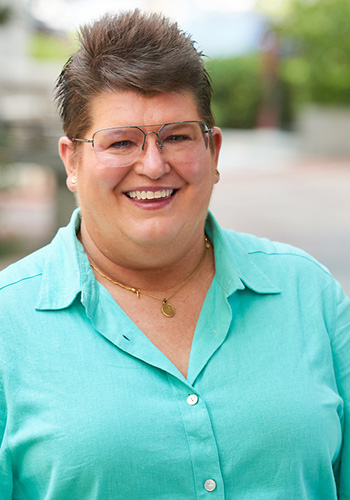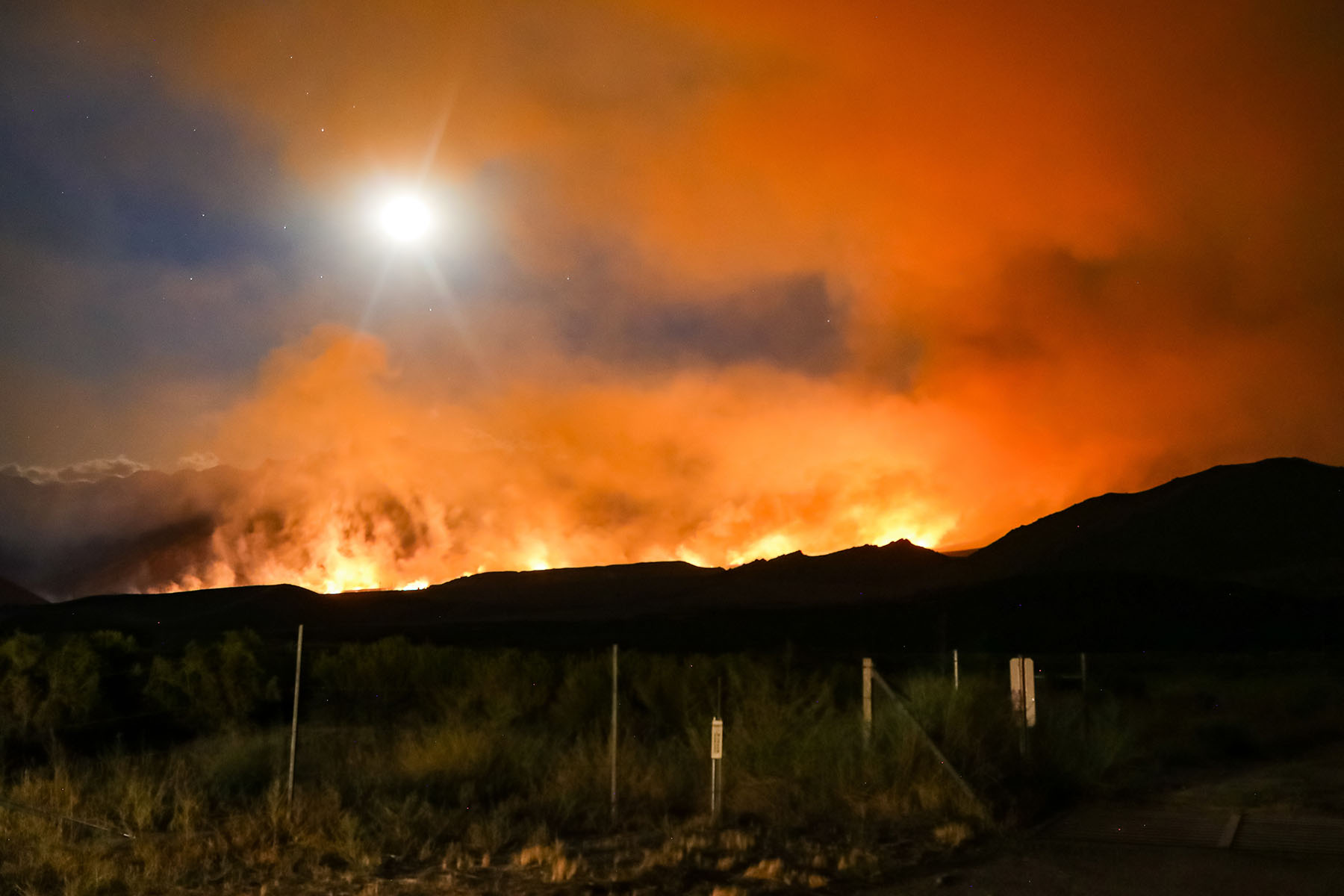Experts – including USC Gould’s Robin Craig – explore traditional and modern methods for building wildfire resilience in a burning world
By Nina Raffio
 |
| Joshua trees burn during the York Fire in the Mojave National Preserve in July. (Photo/Ty O’Neil, The Associated Press) |
For centuries, Native American tribes used cultural and controlled burns to nurture healthy ecosystems. These deliberate, low-intensity fires helped maintain ecological balance in the region by reducing the risk of catastrophic wildfires, promoting biodiversity and supporting the growth of native plant species and food sources.
Modern fire suppression policies and urban development disrupted these natural processes. The accumulation of overgrown underbrush — fire fuel — and the devastating impacts of climate change are making wildfires more frequent and severe across the West and around the world.
Policymakers are finally learning what Native American tribes have long understood: Fire can be good. And the evidence comes from an unlikely source: artificial intelligence.
“The recognition that controlled burning is a useful tool is rising, as it should,” said William Deverell, professor of history, spatial sciences and environmental studies at the USC Dornsife College of Letters, Arts and Sciences. “Indigenous and community-based practices, ordinances and rules about fire mitigation, hardscaping, brush and other fuel removal, building material prohibitions — these are all good things in landscapes rendered vulnerable to wildfire. It is those practices, which are likely done best at the community and even neighborhood level, that will be case studies of effective responses to and after fire.”
California reconsiders its relationship with fire
 |
| Professor Robin Craig |
California’s fire regulations, which evolved over time, have often mirrored the tension between traditional practices and modern firefighting approaches.
Last year, the state of California adopted a strategic plan for wildfire resilience with the goal of expanding prescribed burns to 400,000 acres annually by 2025. This initiative is a significant departure from complete fire suppression, an approach originally introduced by European settlers.
“This is a great example of contemporary law actively — finally — incorporating traditional Indigenous knowledge into modern resilience,” said Robin Craig, an expert in environmental law and the Robert C. Packard Trustee Chair in Law at the USC Gould School of Law. “The descendants of European settlers are slowly learning that complete wildfire suppression eventually makes things worse — something that many tribes in California already knew.”
The plan specifically calls for enhanced tribal engagement and expanded use of cultural burns, where tribal organizations use fire intentionally for ceremonies, subsistence, and managing vital cultural and economic resources.
The U.S. Forest Service outlawed controlled burns, also known as prescribed fires, after the Big Burn of 1910 — a devastating blaze that scorched 3 million acres of U.S. and Canadian forest in two days. This restriction curtailed tribes’ cultural and controlled burn practices.
“When I think about the past century of ineffective fire suppression policies, you know, they didn’t listen to the Indian voice enough,” said Dirk Charley, a member of the Dunlap Band of Mono Indians. Charley is a retired U.S. Forest Service employee, former firefighter and a key partner with the Sierra-Sequoia Burn Cooperative, an initiative supported by the Huntington-USC Institute on California and the West.
Charley grew up on a ranch in Dunlap, a community east of Fresno, where he helped his family work the land with fire. Now, he advises scientists and consults with tribes and agencies across the U.S. to coordinate prescribed fires.
“When we go out and work the land, it’s always done with respect for the people whose land we’re on. We work closely with local tribes and walk the sites with them. Cultural burning, for me, holds a distinct purpose: to connect with communities, bond over our families and friendships, and nurture our ties to the land and our culture,” he said.
How AI can support the growing need for prescribed burns amid intensifying wildfires
As California reembraces centuries-old Indigenous knowledge to inform the response to today’s fire threats, a powerful new tool — AI — is also emerging.
USC researchers are using AI to collaborate with firefighters to strategically plan controlled burns and manage unexpected blazes. They’ve found that AI enhances traditional ecological knowledge — such as Charley’s — by predicting environmental responses to controlled burns and helping assess how smoke spreads, expanding age-old wisdom that has sustained ecosystems for generations.
Experts note that AI can help address the surging demand for prescribed fires, which has intensified amid the relentless onslaught of mega-fires. In collaboration with state, federal and tribal entities, AI bridges gaps, equipping firefighting efforts with additional support when it is needed most.
“Designing a controlled fire in a way that is safe and does not harm the environment is very difficult. This does not scale given the growing demand for preventive fires,” said Yolanda Gil, research professor of computer science and spatial sciences at the USC Viterbi School of Engineering.
Gil is using AI techniques to capture sophisticated knowledge that experts use to build models that predict how fire evolves under different conditions based on factors like wind speed, direction, slope and vegetation density. It can also empower decision-makers to tailor their mitigation approaches to specific goals, Gil said. For instance, it can generate customized plans if the goal is to burn a certain percentage of vegetation in an area or to minimize the impact on air quality.
Reflecting on a century of ineffective fire suppression policies, it’s clear that the Indigenous perspective wasn’t adequately considered, Charley said, noting that his father made a point of blending traditional ecological knowledge with fire training, emphasizing respect for sacred sites and Indigenous practices.
Central to effective firefighting is partnering with Indigenous tribes, whose invaluable insights into the land, gained through centuries of observance and reverence, are vital in understanding the terrain’s nuances and vulnerabilities.
“Recognizing what surrounds us is crucial — different animals, insects, plants, trees,” Charley said. “This concept is at the heart of the Sierra-Sequoia Burn Cooperative, where we use controlled and cultural fires to enhance growth and maintain a see-through forest that benefits all, from the raptors that fly through the trees to the families that connect through the shared cultural landscape.”

















